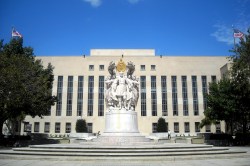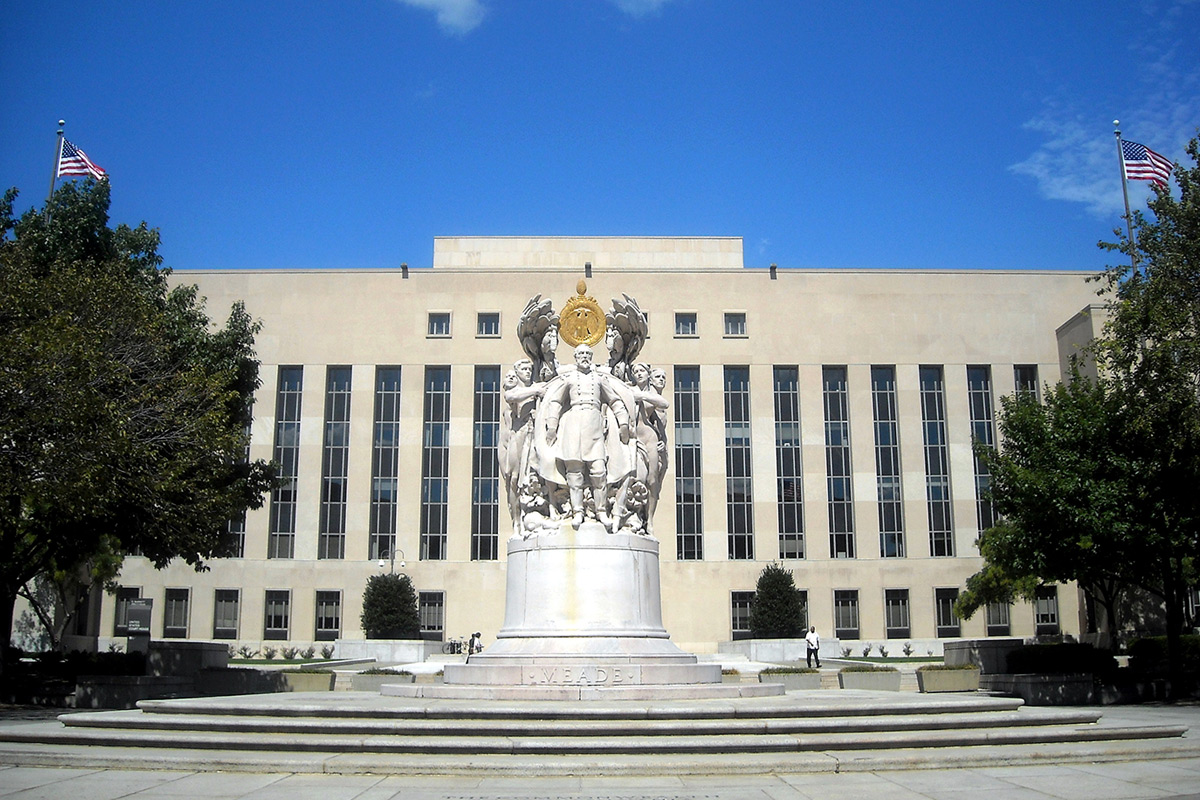
AgnosticPreachersKidDanger lurks within.
On any given day, the U.S. Court of Appeals for the D.C. Circuit has the power to throw the environmental movement into complete disarray.
Tucked into a nondescript neighborhood in Washington, D.C., the court isn’t well known to the public, but it’s often called the second most important court in the United States. It has particular significance to the environmental movement because of its exclusive jurisdiction over regulations involving vital environmental laws like the Clean Air Act, the Clean Water Act, and the Endangered Species Act.
In the early stages of the modern environmental movement, great progress was made through enterprising lawsuits brought by groups such as the Natural Resources Defense Council and Environmental Defense Fund to enforce the protective mandates of those landmark environmental statutes. But the challenge is different now, with judges on the bench seeking to derail, not enforce, these fundamental safeguards. How environmentalists respond to this threat could dramatically impact the success of the movement in combating 21st century environmental threats such as global warming.
Indeed, with Congress paralyzed by gridlock, the only path forward for effective responses to climate pollution is through administrative implementation of the Clean Air Act — which the Obama administration is vigorously pursuing. But that option is available only because of a 5-4 Supreme Court decision in 2007. In Massachusetts v. E.P. A., the court held that the act, as currently written, empowers the Environmental Protection Agency to regulate pollutants that cause global warming. The EPA is moving to exercise this authority, but the fate of all its regulatory initiatives will be evaluated, and in large measure determined, by the D.C. Circuit.
The court holds the cards on many environmental issues. Indeed, in the first two weeks of this month alone, the court is hearing cases involving emissions standards on sewage sludge incinerators, challenges to EPA rules requiring states to address greenhouse emissions in their permitting requirements, emissions standards for hazardous pollutants resulting from lead processing, and even a pair of cases regarding the importation of polar bear hunting trophies.
These cases sometimes go very badly for environmentalists. In October of 2012, after a 2-1 D.C. Circuit majority overturned EPA’s “Good Neighbor” rule — which constrained individual states’ contributions to air pollution in neighboring downwind states — Pulitzer Prize-winning Washington Post columnist and George Mason University professor Stephen Pearlstein observed that “dysfunctional government has become the strategic goal of the radical fringe [on the political right]. … Nowhere has this strategy been pursued with more fervor, or more success, than the U.S. Court of Appeals for the District of Columbia Circuit, where a new breed of activist judges are waging a determined and largely successful war on federal regulatory agencies.”
As Pearlstein makes clear, cases are not decided by the court as an institution; they are decided by the judges who sit on that court. And there has been a concerted effort by conservatives to dominate the federal bench, and this bench in particular. Look no further than Senate obstruction of President Obama’s judicial nominees to the D.C. Circuit. Republicans have already led a successful filibuster against Caitlin Halligan, a highly qualified D.C. Circuit nominee who ultimately withdrew her nomination after more than two years of obstruction. Now they have introduced a bill to reduce the number of seats on the D.C. Circuit from 11 to eight in a nakedly partisan attempt to maintain conservative dominance over the makeup of the court.
President George W. Bush appointed three of the court’s seven currently active judges, Bill Clinton appointed three, and George H.W. Bush appointed one. President Obama has yet to make a successful appointment, despite four of the seats being vacant. But that does not tell the entire story. Many federal courts rely on judges who have taken “senior status” — a form of semi-retirement that involves still hearing cases — to help manage caseloads. Five of the court’s six very active senior judges are appointees of Ronald Reagan or H.W. Bush, and these firebrand conservatives continue to make their mark in environmental cases.
It is time for the environmental movement to involve itself more in the conversation about nominations. There is no downside to supporting well-qualified nominees to the bench and opposing mindless obstructionism. It’s also important to make clear that the environmental community doesn’t need treehuggers on the bench; it only needs judges who will follow the protective mandates of the statutes passed by Congress.
When it comes to addressing the nation’s 21st century environmental problems, environmentalists must pay far more attention to the third branch of government — a branch, after all, that is made up of people who are appointed not for four or six years, but for lifetime terms. The future of environmental law is inextricably linked with the future of the federal bench.
For more on the D.C. Circuit and its importance, see “Broken Circuit: Obstructionism in the Environment’s Most Important Court” [PDF], the cover story in the latest issue of The Environmental Forum.



